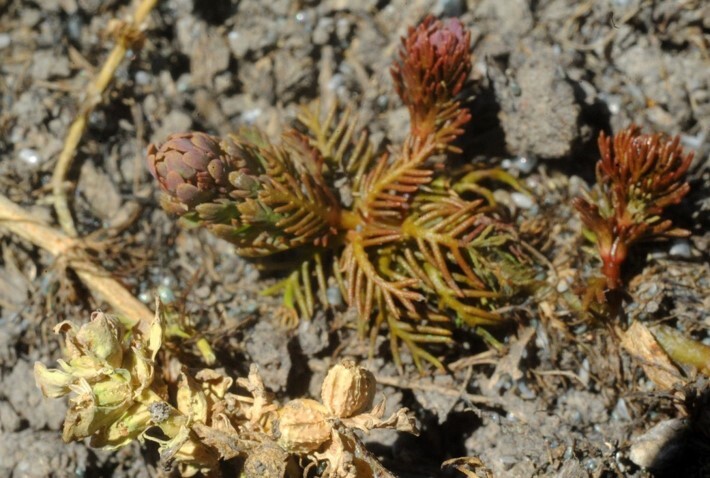Haloragaceae
Ephemeral, annual or perennial, herbs, shrubs or rarely small trees. Leaves opposite, alternate or whorled, simple, entire to pectinate; stipules absent. Inflorescence usually an axillary spike of solitary flowers, a simple or compound dichasium or sometimes a terminal thyrsoid; each flower or dichasium subtended by a pair of bracteoles. Flowers actinomorphic, bisexual or unisexual (then plants monoecious or dioecious); sepals usually 4, free, persistent on fruit; petals usually 4, free, usually hooded or boat-shaped, sometimes absent; stamens usually 8, rarely 4; filaments slender, free, usually elongating after anthesis; anthers ovoid to linear, basifixed, 4-celled, sometimes apiculate. Ovary inferior, usually completely or incompletely 4-celled; ovules 1 or 2 per cell (if 2, then 1 aborts); styles usually 4, free; stigmas usually more or less capitate. Fruit a winged or ornamented, 1–4-seeded, indehiscent nut or schizocarp splitting into 4 single-seeded mericarps.
8 genera with about 150 species, almost cosmopolitan but concentrated in Australia with 6 genera and 105 species.
Jeanes, J.A. (1996). Haloragaceae. In: Walsh, N.G.; Entwisle, T.J., Flora of Victoria Vol. 3, Dicotyledons Winteraceae to Myrtaceae, pp. 887–908. Inkata Press, Melbourne.
 Spinning
Spinning


